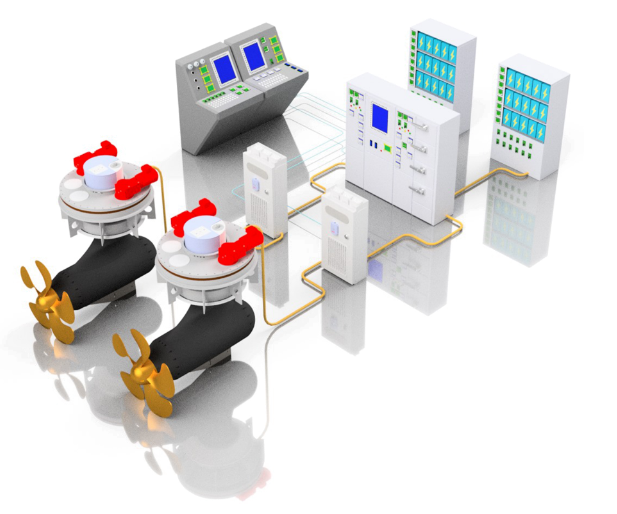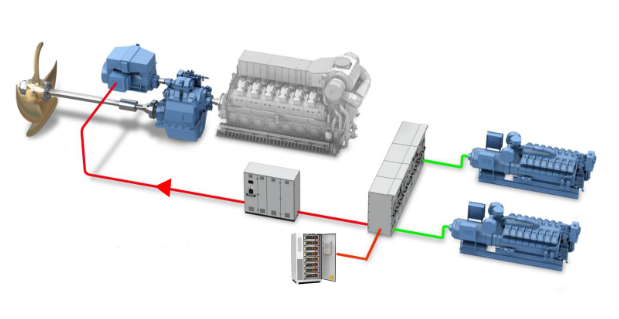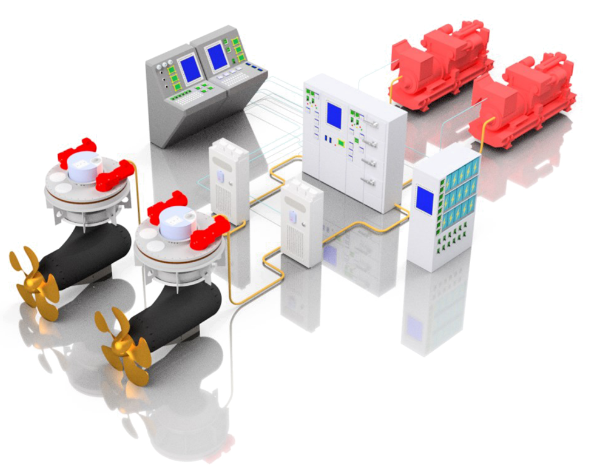
Introducing the Full Electric Marine Vessel, a pioneering solution at the forefront of sustainable maritime transportation. Embodying the pinnacle of eco-friendly innovation, this vessel represents a paradigm shift towards a cleaner, greener future for ocean navigation.
The full electric vessel offers a host of compelling advantages. Its reliance solely on battery power eliminates the need for traditional fossil fuels, resulting in zero emissions and significantly reducing the vessel’s environmental footprint. By harnessing the power of electricity, the vessel not only minimizes air and water pollution but also contributes to quieter and smoother operation, enhancing the overall maritime experience.
At the heart of the full electric vessel is its advanced battery system, which serves as the primary source of propulsion and onboard power generation. High-capacity batteries store energy from renewable sources or shore-based charging infrastructure, providing ample power for extended voyages. Electric motors drive the vessel’s propulsion system, offering precise control and efficient performance across various operating conditions.
The full electric vessel achieves unparalleled environmental sustainability by completely eliminating CO2 emissions associated with traditional marine propulsion systems. By operating solely on battery power, it helps combat climate change and promotes cleaner air and waterways, making it a compelling choice for environmentally conscious shipping operations.
Furthermore, the absence of combustion engines results in quieter and vibration-free operation, reducing noise pollution and enhancing onboard comfort for passengers and crew alike. This makes the full electric vessel an attractive option for eco-friendly maritime transportation and ecotourism ventures.
While the full electric vessel represents a leap forward in sustainable maritime technology, the involvement of a professional and experienced system integrator remains crucial for its successful implementation. Companies like ZGT, with our proven expertise in electrical propulsion systems and comprehensive understanding of maritime engineering, play a pivotal role in ensuring the seamless integration and optimal performance of full electric vessels.
In conclusion, the full electric marine vessel epitomizes the future of sustainable ocean transportation. With its zero-emission operation, advanced battery technology, and commitment to environmental stewardship, it stands as a beacon of innovation in the quest for a cleaner and more sustainable maritime industry.

Introducing the Parallel Hybrid Marine Vessel, a groundbreaking solution driving maritime sustainability to new heights. This vessel embodies a fusion of advanced technology and environmental stewardship, revolutionizing the way we navigate the world’s oceans.
The parallel hybrid system offers a multitude of benefits. Its innovative design optimizes energy utilization, resulting in substantial reductions in fuel consumption compared to conventional vessels. This not only leads to cost savings but also significantly reduces the vessel’s carbon footprint, contributing to a cleaner and healthier marine environment. By seamlessly integrating multiple power sources, the vessel ensures flexibility and efficiency across a wide range of operating conditions, setting new standards for sustainable maritime transportation.
At the core of the parallel hybrid vessel is a sophisticated system configuration. Combining traditional diesel engines with electric propulsion systems, the vessel maximizes operational efficiency while minimizing environmental impact. Diesel engines serve as the primary power source, providing propulsion during high-speed transits and periods of increased power demand. Electric motors complement this setup, offering additional thrust and enabling efficient operation at lower speeds or in environmentally sensitive areas. Advanced control systems manage the coordination between different power sources, ensuring optimal performance and minimal energy wastage.
The parallel hybrid system achieves significant fuel savings by intelligently adapting its operation profile to suit various operating conditions. During low-speed maneuvers or when cruising in emission-controlled zones, the vessel primarily relies on electric power, conserving diesel fuel and reducing emissions. Conversely, diesel engines are engaged during high-speed transits or when additional power is needed, ensuring efficient operation across the entire speed range.
In addition to fuel efficiency, the parallel hybrid vessel is committed to reducing CO2 emissions. By leveraging hybrid propulsion technology and optimizing operational practices, it helps mitigate the impact of maritime transportation on climate change and promotes a more sustainable future.
The involvement of a professional and experienced system integrator is essential for the successful implementation of the parallel hybrid system. Companies like ZGT, with our extensive expertise in maritime engineering and proven track record in system integration, are well-positioned to undertake this critical task. Our ability to deliver innovative solutions and ensure seamless integration of complex systems is instrumental in realizing the full potential of the parallel hybrid vessel.
In conclusion, the parallel hybrid marine vessel represents a significant advancement in maritime sustainability. With its combination of efficiency, flexibility, and environmental responsibility, it is poised to lead the way towards a cleaner and more sustainable future for the maritime industry.

Introducing the Serial Hybrid Marine Vessel, a revolutionary advancement in maritime sustainability. This vessel stands at the forefront of eco-conscious transportation solutions, blending cutting-edge technology with environmental responsibility.
The serial hybrid vessel offers a multitude of advantages. Its optimized energy usage translates into significantly reduced fuel consumption compared to traditional vessels, leading to cost savings and a diminished environmental footprint. By incorporating hybrid propulsion systems, the vessel drastically cuts CO2 emissions, contributing to cleaner air and a healthier planet. Its hybrid configuration allows for seamless transitions between power sources, ensuring operational flexibility across various conditions. Moreover, with state-of-the-art systems and components, the serial hybrid vessel sets new standards for efficiency and sustainability in maritime engineering.
At the heart of the vessel lies a sophisticated system configuration. Diesel engines serve as the primary power source for propulsion, while electric motors supplement power, particularly at lower speeds. Energy storage systems, utilizing batteries, store excess energy and enable regenerative braking, ensuring continuous power supply. Control systems coordinate the operation of various components, optimizing performance in real-time.
The serial hybrid vessel achieves significant diesel savings by intelligently adapting its operation profile. During low-speed maneuvers or in environmentally sensitive areas, it primarily relies on electric power, conserving fuel and reducing emissions. Conversely, diesel engines engage during high-speed transits or when additional power is required, ensuring efficiency across all operational scenarios.
The vessel’s commitment to environmental sustainability is evident in its substantial reduction of CO2 emissions. By leveraging hybrid propulsion technology and optimizing operational practices, it aligns with global efforts to combat climate change and transition towards a low-carbon economy.
Integral to the vessel’s success is the involvement of a professional and proven system integrator. ZGT, renowned for its expertise and extensive experience in maritime engineering, is ideally suited to undertake this critical task. With a track record of delivering innovative solutions and ensuring seamless integration of complex systems, ZGT inspires confidence in the successful implementation of the serial hybrid design.
In conclusion, the serial hybrid marine vessel represents a significant leap forward in maritime sustainability. With its blend of efficiency, sustainability, and technological innovation, it promises to revolutionize ocean transportation for a cleaner, more sustainable future.



